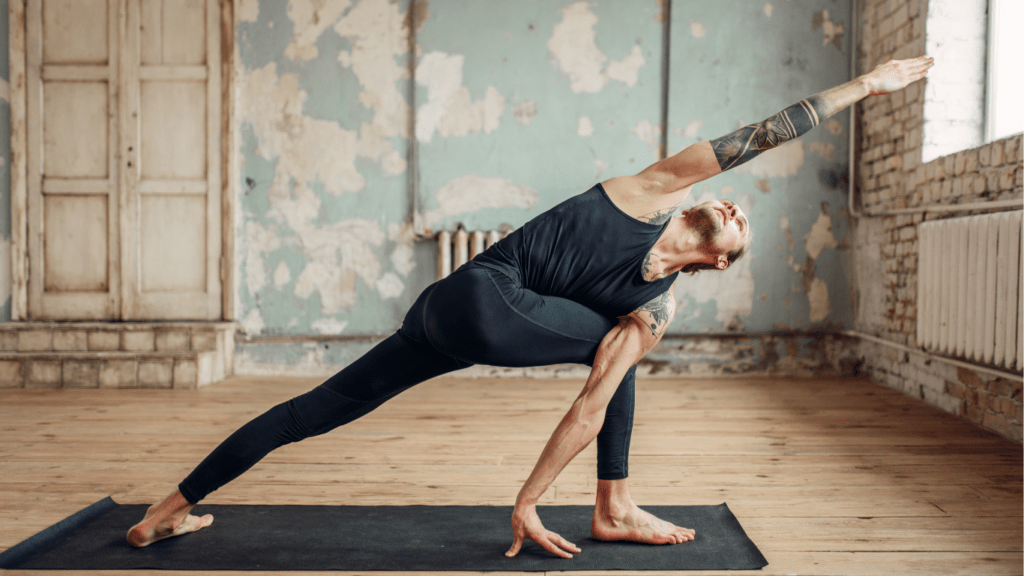When it comes to training, most of us focus on strength, endurance, or speed, often overlooking two crucial components: flexibility and mobility. These unsung heroes might not seem as flashy as lifting heavy weights or running faster, but they play a vital role in keeping our bodies resilient and injury-free. Without them, even the most well-designed workout routines can lead to setbacks.
Understanding Flexibility And Mobility
Flexibility and mobility are foundational aspects of effective and injury-free training. While often used interchangeably, they represent distinct physical attributes that work together to enhance movement quality.
Definitions And Key Differences Between Flexibility And Mobility
Flexibility refers to the range of motion in a muscle or group of muscles. It measures how far a muscle can stretch without causing discomfort. For example, being able to touch your toes during a standing stretch demonstrates hamstring flexibility.
Mobility encompasses the ability of joints to move through their full range of motion in a controlled and functional manner. Unlike flexibility, it includes strength, coordination, and stability. Rotating your shoulder in a circular motion is an example of optimal shoulder joint mobility.
While flexibility focuses on muscle extensibility, mobility integrates joint health and motor control. A flexible body is not inherently mobile unless both attributes are trained together.
Why They Are Crucial For Injury Prevention
- Proper flexibility protects muscles from strain during activities that require increased range, such as sprinting or lifting.
- Overly tight muscles can pull on adjacent joints, increasing injury risk.
- Mobility ensures that joints move efficiently, reducing compensatory movements that strain surrounding structures. For instance, inadequate ankle mobility often transfers stress to the knees, leading to overuse injuries.
- Combining flexibility and mobility fosters balanced movement.
- Imbalances, like tight hip flexors coupled with poor hip mobility, impair performance and elevate injury risk during complex motions like squats or lunges.
The Science Behind Flexibility And Mobility
Flexibility and mobility play integral roles in preserving the body’s functionality and preventing injuries. Understanding their scientific basis sheds light on their critical contribution to overall athletic performance.
How Flexibility Impacts Muscle Function
Flexibility determines the extensibility of muscle fibers, influencing movement efficiency and reducing the likelihood of strain. When muscles maintain optimal flexibility, they contract and lengthen without excessive tension, enabling smoother motion. For example, hamstring flexibility supports proper running mechanics by permitting full leg extension without overloading the lower back or knees.
Muscles with limited flexibility often compensate by generating tension, leading to imbalances and an elevated risk of overuse injuries. Consistent flexibility training, such as static stretching or proprioceptive neuromuscular facilitation (PNF), helps optimize muscle fiber length and elasticity. Healthy muscles distribute forces evenly, preventing localized strain during physical activity.
The Role Of Mobility In Joint Health
Mobility allows joints to move seamlessly through their full range while maintaining control and stability. It combines:
- flexibility
- strength,
- proprioception
ensuring that muscles and connective tissues work together to stabilize joints. For instance, shoulder mobility is essential for overhead movements like throwing or lifting, preventing undue stress on the rotator cuff or scapular region.
Limited joint mobility often leads to mechanical compensation, where other structures bear the load, increasing wear and tear. Strengthening mobility through dynamic stretches or mobility drills enhances motor control, supporting smoother, more efficient joint mechanics. Joints with optimal mobility evenly distribute load, reducing risks of degenerative conditions like arthritis or tendonitis.
Benefits Of Flexibility And Mobility Training

Flexibility and mobility training provide significant advantages in physical fitness and overall well-being. Incorporating these practices ensures balanced performance, reduces injury risk, and promotes long-term health.
Enhancing Athletic Performance
Improved flexibility and mobility enhance movement efficiency and athletic output. Increased range of motion enables effective execution of complex movements like squats, lunges, or overhead presses. With optimal mobility, joints operate smoothly, enhancing strength and power by reducing energy lost in restricted or dysfunctional movements. For example, sprinters benefit from enhanced hip flexibility and ankle mobility, which improve stride length and speed.
Reducing Risk Of Common Injuries
Flexibility and mobility address muscular and joint imbalances that often cause injuries. Tighter muscles and restricted joints increase the likelihood of strains, tears, or overuse injuries during training or competition. By integrating mobility exercises such as dynamic stretches and joint mobilization drills, I minimize compensatory movement patterns that contribute to injuries like lower back pain or knee instability.
Supporting Long-Term Physical Health
Consistent flexibility and mobility training support joint integrity and muscular function over time. Maintaining pliable muscles and mobile joints mitigates age-related stiffness and degeneration, promoting better posture and functional movement. Regular practices like yoga or mobility flows safeguard joint health and help prevent chronic conditions such as osteoarthritis, ensuring I stay active and agile into later years.
Effective Methods To Improve Flexibility And Mobility
Improving flexibility and mobility requires intentional and consistent practices tailored to specific needs. Implementing proven techniques enhances movement efficiency, reduces injury risk, and supports overall fitness goals.
Stretching Techniques: Static Vs Dynamic
Stretching increases muscle length and joint range. I use static stretching, holding a muscle in an elongated position for 15-60 seconds, after workouts to reduce tension and support recovery. For example, hamstring stretches improve flexibility by enhancing extensibility. Conversely, I perform dynamic stretching, involving controlled movements like leg swings or arm circles, during warm-ups. These activate muscles, increase blood flow, and enhance joint mobility, ensuring better performance during physical activities.
Incorporating Mobility Drills Into Your Routine
Mobility drills integrate strength, coordination, and joint control. I include exercises like hip circles, shoulder dislocations, and squat patterns to reinforce active joint ranges. Performing 5-10 minutes of such drills daily optimizes joint mechanics and supports smoother movement in compound exercises. For example, deep squats improve ankle, knee, and hip mobility while enhancing dynamic stability.
Using Tools Like Foam Rollers And Resistance Bands
Foam rollers target muscle adhesions and enhance myofascial release. I roll tight areas like the calves and quadriceps for 30-60 seconds to restore normal tissue function. Resistance bands enhance flexibility and mobility through active engagement. For example, I use bands for hamstring stretches or shoulder rotations, boosting elasticity and controlled joint motion. Combining these tools with stretching and drills accelerates improvements and reduces stiffness over time.



 Lead Training Analyst
Lead Training Analyst
